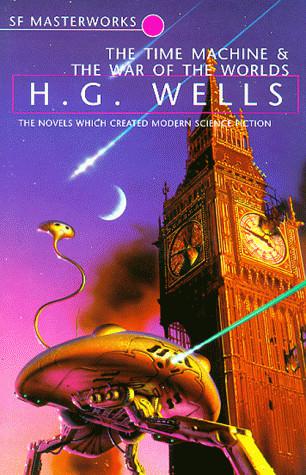
The Time Machine and The War of the Worlds PDF
Preview The Time Machine and The War of the Worlds
Product Description
On October 30, 1938, Orson Welles terrified American radio listeners by describing a Martian invasion of Earth in a broadcast that became legendary. Forty years earlier, H. G. Wells had first penned the story: The War of the Worlds, a science-fiction classic that endures in our collective subconscious.
Deeply concerned with the welfare of contemporary society, Wells wrote his novel of interplanetary conflict in anticipation of war in Europe, and in it he predicted the technological savagery of twentieth century warfare. Playing expertly on worldwide security fears, The War of the Worlds grips readers with its conviction that invasion can happen anytime, anywhere—even in our own backyard.
Introduction to War of the Worlds
The Martians also reflect Wells himself. Just as the bicycle liberated Wells from the limitations of a weak body, the machines used by the Martians, who are weighed down because the pull of gravity is stronger on Earth than it is on Mars, enable them to move swiftly and attack without warning. The machine is an extension of a body, a kind of prosthetic device that supplies an ability the body lacks. The Martian sitting on top of a huge, three-legged fighting machine striding across Surrey toward London resembles nothing so much as Wells piloting his bicycle around the countryside. And the Martians, like Wells, tend to work alone. That is, while they are involved in a collective activity—the invasion and conquest of England, which is, by extension, the world—they work alone in their fighting machines or their aluminum manufacturing devices. Except for their time in the space capsule, they are rarely together.
Wells's first problem was to decide how to tell such a tale. He could use an external, omniscient narrator, but that would cut down on the immediacy of the action and make it seem much more like history. A single first-person narrator would be possible, but that person would have to travel long distances at almost superhuman speed in order to see everything involved in the Martian invasion. Wells opts for a device Robert Louis Stevenson (1850-1894) uses in Treasure Island (1883), having a first-person narrative become two first-person narratives by introducing a second character who tells us about what happened elsewhere. This is, admittedly, an awkward device because the two characters—brothers in The War of the Worlds—are not in communication with each other. Their separate stories become a single story because the primary narrator takes control of his brother's tale, treating him in the same way an omniscient narrator would treat a character.
The primary narrator, then, is both witness and author, a modification of the narrator of The Time Machine, who transcribes the story of the Time Traveller. The personality of this narrator is a vexing matter, and it is here Wells departs from traditional novelistic practice. Wells clearly had many options in this situation: He could make his nondescript, suburban science writer into a hero by having him either subdue the Martians or lay the foundations for an organized defense. That solution does not suit Wells's hidden intention, which is to warn those people capable of understanding that their world is rotten and will fall at the first blow from an outside force.
Wells does what in both human and novelistic terms makes the most sense: He makes his narrator a man of science, but a conventional thinker and not a man in the line of the Time Traveller. He is not a leader, not a warrior, but a man imbued with curiosity. He wants to understand the Martians, wants to observe their machines, and wants to survive to tell the tale. His psychological depth is slight: He loves his wife, detests the mad clergyman who almost manages to deliver him to the Martians, feels guilt about being responsible for the man's death, and has a nervous breakdown after learning that the Martians all die because of Earth's bacteria. The second central figure, the narrator's brother, is no more developed than the narrator. He is a "medical student, working for an imminent examination", but that is all we know of him. When, in the final chapter of book one, Wells feels he no longer needs the brother, he simply has him board a ship, witness a navy vessel ram two Martian fighting machines, and sail to Europe. We then return to the adventures of our primary narrator.
This sacrifice of character depth to action explains the success of The War of the Worlds. If Wells had transformed his narrator into a preachy precursor of his New Republicans, the reader would probably begin to cheer for the Martians. Instead, he uses both brothers as innocent points of view, reporters telling us what they saw. That they have emotions is merely incidental to their role as informants.
Wells relegates his ideas to the minor characters, carefully linking them to human imperfections so that the novel does not degenerate into sermon or essay. Probably the most interesting example of this is the artilleryman. In book one, chapter 11, the narrator, hiding inside his Woking house, sees a man trying to escape the Martians. He invites the man in and learns he is a soldier, "a driver in the artillery" whose unit has been wiped out by the Martians. The two separate in chapter 12, and we think we've seen the last of the artilleryman until suddenly in book two, chapter 7, he reappears, and now it is he who extends hospitality to the narrator.
